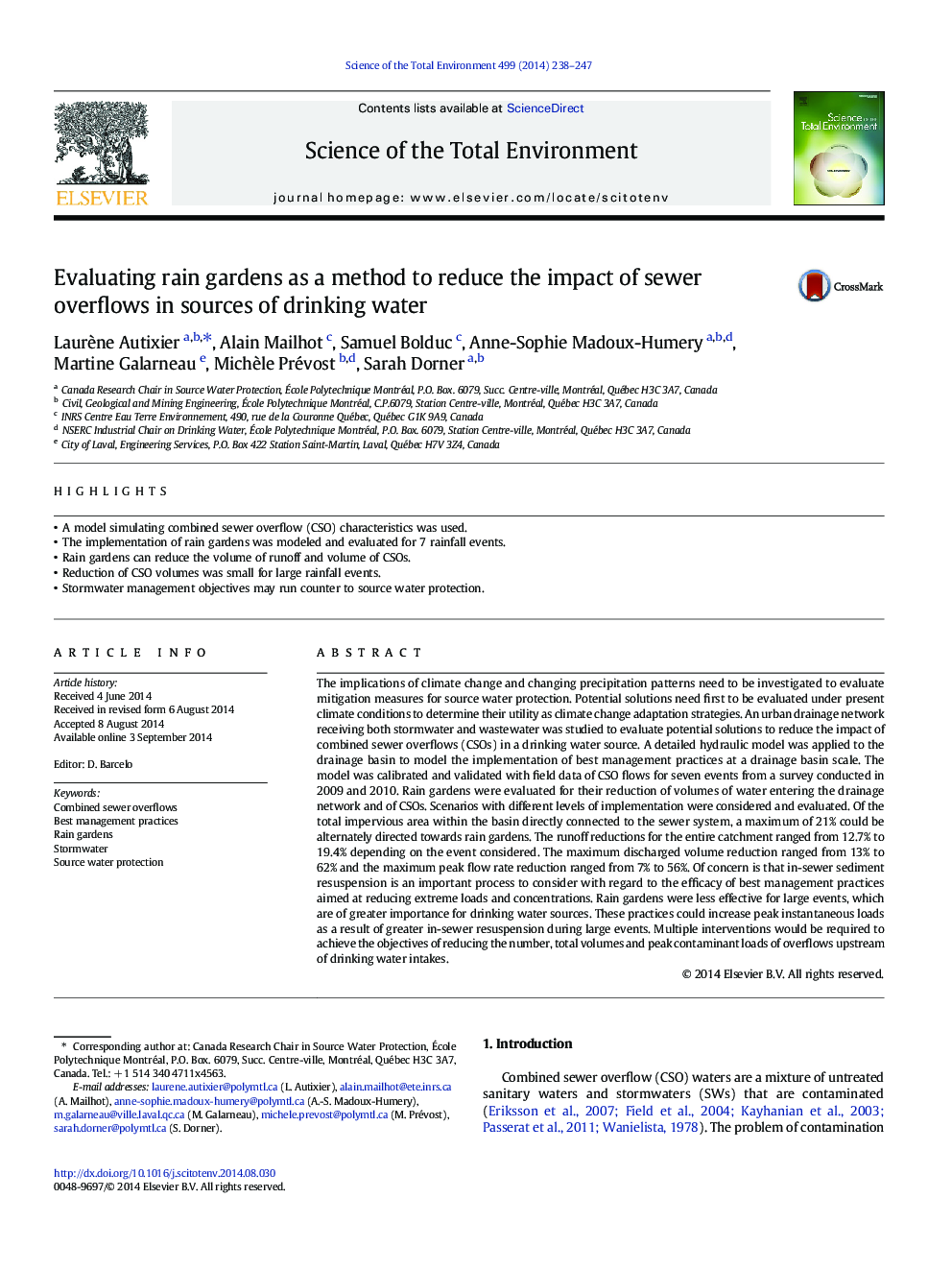| کد مقاله | کد نشریه | سال انتشار | مقاله انگلیسی | نسخه تمام متن |
|---|---|---|---|---|
| 6328902 | 1619774 | 2014 | 10 صفحه PDF | دانلود رایگان |
عنوان انگلیسی مقاله ISI
Evaluating rain gardens as a method to reduce the impact of sewer overflows in sources of drinking water
ترجمه فارسی عنوان
ارزیابی باغ باران به عنوان یک روش برای کاهش تاثیر سرریز فاضلاب در منابع آب آشامیدنی
دانلود مقاله + سفارش ترجمه
دانلود مقاله ISI انگلیسی
رایگان برای ایرانیان
کلمات کلیدی
سرریز فاضلاب ترکیبی، بهترین شیوه های مدیریت، باغ باران، طوفان آب حفاظت از منبع منبع،
موضوعات مرتبط
علوم زیستی و بیوفناوری
علوم محیط زیست
شیمی زیست محیطی
چکیده انگلیسی
The implications of climate change and changing precipitation patterns need to be investigated to evaluate mitigation measures for source water protection. Potential solutions need first to be evaluated under present climate conditions to determine their utility as climate change adaptation strategies. An urban drainage network receiving both stormwater and wastewater was studied to evaluate potential solutions to reduce the impact of combined sewer overflows (CSOs) in a drinking water source. A detailed hydraulic model was applied to the drainage basin to model the implementation of best management practices at a drainage basin scale. The model was calibrated and validated with field data of CSO flows for seven events from a survey conducted in 2009 and 2010. Rain gardens were evaluated for their reduction of volumes of water entering the drainage network and of CSOs. Scenarios with different levels of implementation were considered and evaluated. Of the total impervious area within the basin directly connected to the sewer system, a maximum of 21% could be alternately directed towards rain gardens. The runoff reductions for the entire catchment ranged from 12.7% to 19.4% depending on the event considered. The maximum discharged volume reduction ranged from 13% to 62% and the maximum peak flow rate reduction ranged from 7% to 56%. Of concern is that in-sewer sediment resuspension is an important process to consider with regard to the efficacy of best management practices aimed at reducing extreme loads and concentrations. Rain gardens were less effective for large events, which are of greater importance for drinking water sources. These practices could increase peak instantaneous loads as a result of greater in-sewer resuspension during large events. Multiple interventions would be required to achieve the objectives of reducing the number, total volumes and peak contaminant loads of overflows upstream of drinking water intakes.
ناشر
Database: Elsevier - ScienceDirect (ساینس دایرکت)
Journal: Science of The Total Environment - Volume 499, 15 November 2014, Pages 238-247
Journal: Science of The Total Environment - Volume 499, 15 November 2014, Pages 238-247
نویسندگان
Laurène Autixier, Alain Mailhot, Samuel Bolduc, Anne-Sophie Madoux-Humery, Martine Galarneau, Michèle Prévost, Sarah Dorner,
